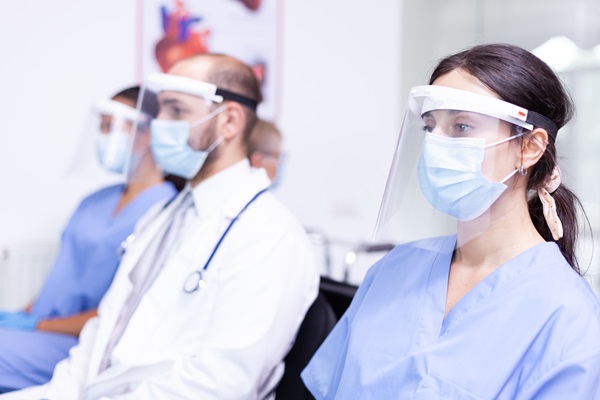Spill Kits in Healthcare Settings: Managing Biological and Chemical Spills Safely

Clinics and hospitals always have patients who need the best comfort and care possible to ensure everyone gets back to their normal lives. As patients come and go, it is also important to make sure that your healthcare facility is kept clean and sanitised to not spread germs, bacteria, and viruses.
Because of this, managing spills and other accidents, whether it be from biological or chemical liquids, is a part of their stringent safety and maintenance protocols.
This is why aside from the industrial field, healthcare benefits greatly from spill kits and spill management as well.
Let’s see how the healthcare industry utilises spill kits below!
Understanding Spill Kits in Healthcare
Spill kits in healthcare settings are different from general-purpose kits because of the unique risks in these environments.
They include absorbent materials, protective gear, and disinfectants specifically made for handling biological and chemical hazards. These items are chosen to handle the specific risks in healthcare, like blood spills, disinfectant chemicals, and chemotherapy drugs.
Key Materials of Healthcare Spill Kits
To effectively manage spills, healthcare spill kits should include the following components:
Absorbent Pads and Powders: These are essential for quickly containing liquid spills, minimising their spread. Absorbent powders are particularly effective for large liquid spills, allowing for rapid cleanup.
Disinfectants: Hospitals often require disinfectants capable of neutralising biological hazards, especially when handling bloodborne pathogens.
Personal Protective Equipment (PPE): Gloves, face shields, and protective aprons are vital for safeguarding employees from direct contact with hazardous substances.
Waste Disposal Bags: Proper waste disposal bags are necessary for containing contaminated materials after cleanup, reducing the risk of cross-contamination.
Types of Spills in Healthcare: Biological vs. Chemical
Healthcare facilities must be prepared to address a range of spills, each with its own set of risks and handling procedures.
Biological Spills
Biological spills typically involve bodily fluids, blood, or infectious materials. These spills can be particularly hazardous because of the risk of transmitting diseases through contact. Immediate containment is essential to minimise exposure and prevent the spread of infectious agents.
Response Protocol: When a biological spill occurs, start by donning PPE to protect against exposure. Use absorbent materials to contain the spill, then apply disinfectant to neutralise potential pathogens. Disinfect the area thoroughly to ensure that no residue remains.
Disposal Procedures: Waste from biological spills must be disposed of in biohazard bags and handled according to healthcare regulations to avoid contamination.
Chemical Spills
Chemical spill management in healthcare settings can range from cleaning agents to hazardous drugs like chemotherapy medications. Given the potential toxicity, handling these spills requires strict adherence to protocols.
Response Protocol: For chemical spills, it is essential to identify the nature of the chemical involved. Once identified, PPE should be selected based on the specific hazards of the substance. Spill kits designed for chemical spills will include materials to neutralise or absorb hazardous chemicals safely.
Disposal Procedures: Hazardous chemical waste must be disposed of following strict regulatory guidelines — often with the use of chemical spill kits. Most facilities have designated procedures for chemical disposal, ensuring that chemicals do not pose a further risk.
Importance of Staff Training and Protocol Awareness
Having a well-stocked spill kit is just one part of ensuring safety; thorough training for healthcare staff is just as important.
Training programs should teach employees about the various types of spill kits, how to use them correctly, and what to do in emergency situations.
Regular Drills: Regular spill response drills are vital to reinforcing spill management protocols. These drills simulate real-world spill scenarios, allowing staff to gain hands-on experience in a controlled environment.
Knowledge of Chemical Safety Data Sheets (SDS): SDS documents provide critical information about the chemicals used within the healthcare facility, outlining appropriate response methods for spills. Staff should be trained on how to interpret SDS data to respond effectively to chemical spills.
Clear Communication Channels: Staff should know whom to contact in the event of a spill, especially if the spill is beyond their scope of training. A clear reporting process enables swift action and minimises potential hazards.
Spill Kit Placement and Accessibility
In healthcare environments where time is often of the essence, spill kits must be strategically located to ensure swift accessibility. Place spill kits in high-risk areas such as laboratories, patient care rooms, and storage areas for chemicals and pharmaceuticals.
Find the Right Spill Kit for Your Healthcare Practice
Handling biological and chemical spills in healthcare settings needs the right tools, training, and procedures. Spill kits designed for healthcare are essential for dealing with the specific dangers found in these areas.
With this, Ecospill’s various spill kits are designed for different chemicals that can help your hospital handle both biological and chemical spills. Proper training in using these spill kits are also just as important, that’s why we also offer a spill kit training course for you and your staff!
Visit our website to see if any of our products can help you make sure that you keep your healthcare practice safe, not just for you, but for your patients as well.
